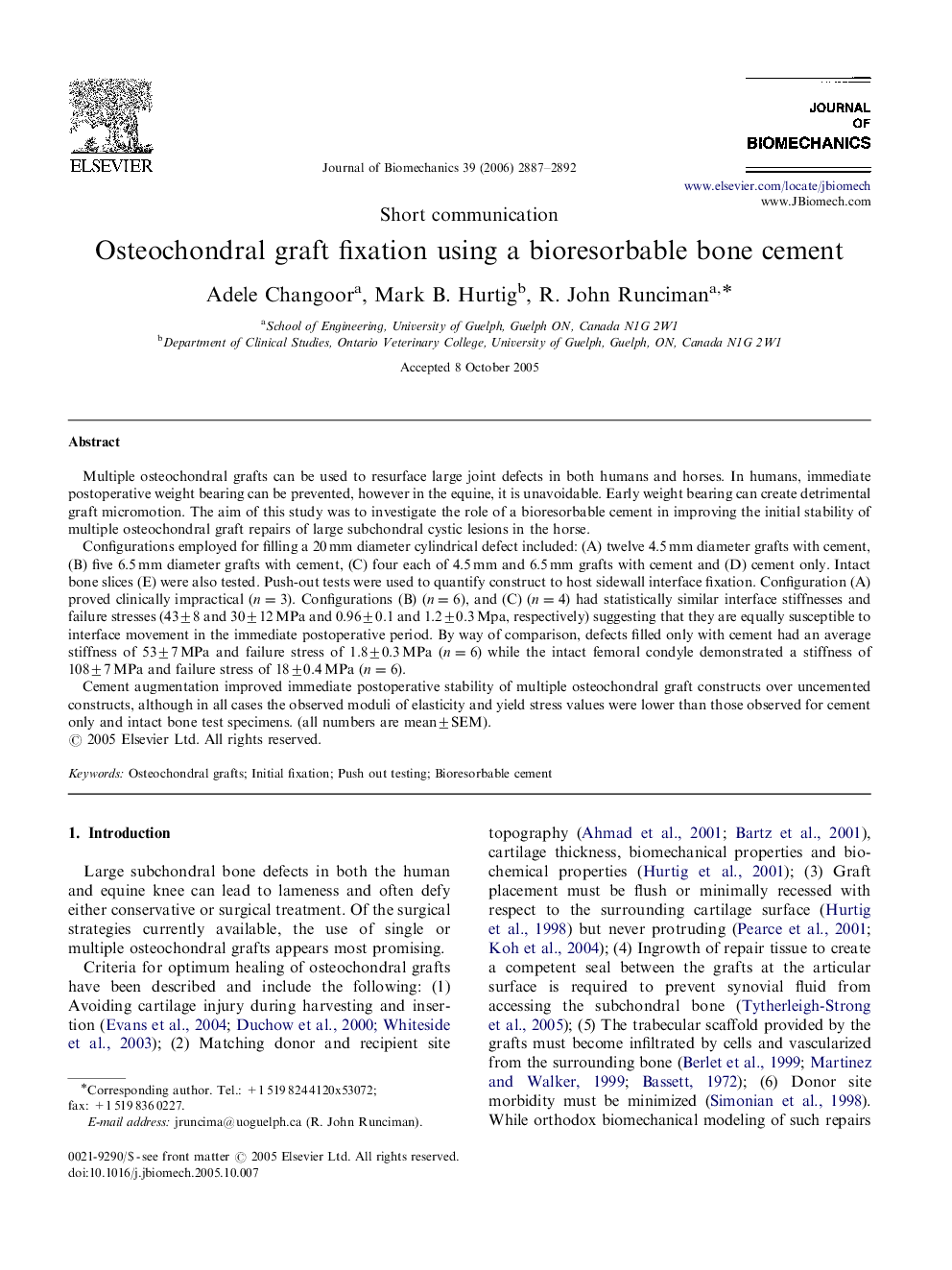| Article ID | Journal | Published Year | Pages | File Type |
|---|---|---|---|---|
| 874615 | Journal of Biomechanics | 2006 | 6 Pages |
Multiple osteochondral grafts can be used to resurface large joint defects in both humans and horses. In humans, immediate postoperative weight bearing can be prevented, however in the equine, it is unavoidable. Early weight bearing can create detrimental graft micromotion. The aim of this study was to investigate the role of a bioresorbable cement in improving the initial stability of multiple osteochondral graft repairs of large subchondral cystic lesions in the horse.Configurations employed for filling a 20 mm diameter cylindrical defect included: (A) twelve 4.5 mm diameter grafts with cement, (B) five 6.5 mm diameter grafts with cement, (C) four each of 4.5 mm and 6.5 mm grafts with cement and (D) cement only. Intact bone slices (E) were also tested. Push-out tests were used to quantify construct to host sidewall interface fixation. Configuration (A) proved clinically impractical (n=3n=3). Configurations (B) (n=6n=6), and (C) (n=4n=4) had statistically similar interface stiffnesses and failure stresses (43±8 and 30±12 MPa and 0.96±0.1 and 1.2±0.3 Mpa, respectively) suggesting that they are equally susceptible to interface movement in the immediate postoperative period. By way of comparison, defects filled only with cement had an average stiffness of 53±7 MPa and failure stress of 1.8±0.3 MPa (n=6n=6) while the intact femoral condyle demonstrated a stiffness of 108±7 MPa and failure stress of 18±0.4 MPa (n=6n=6).Cement augmentation improved immediate postoperative stability of multiple osteochondral graft constructs over uncemented constructs, although in all cases the observed moduli of elasticity and yield stress values were lower than those observed for cement only and intact bone test specimens. (all numbers are mean±SEM).
